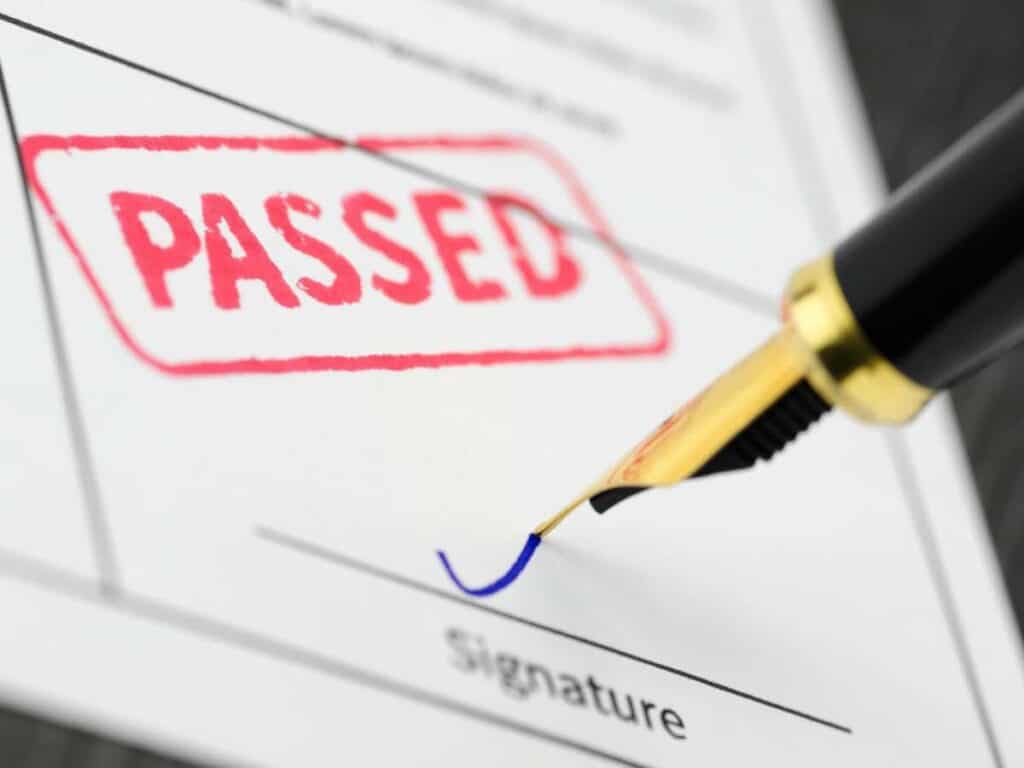What Happens After a Polygraph Test?
It can be nerve-racking to undergo a lie detector test. But what’s even more terrifying is waiting for the examination’s verdict — nothing can be more devastating to a completely innocent person than a false positive result. So, what exactly happens once all those polygraph sensors and straps are removed from your body?
After the polygraph examination itself comes the post-test where the examiner collects and analyzes obtained physiologic data. During this phase, the expert decides whether the examinee was being truthful or deceitful during the lie detector test. Most polygraph test results are available after 24 hours.
Most people prefer to talk about the things that happen before and during a lie detector test. You will be hard-pressed to find a substantial amount of information about what takes place immediately after the exam.
In this post, you will have an idea of what polygraph experts call the post-test phase.
Besides the steps taken by the examiner after you leave the room, I will also talk about the different possible results from a lie detector examination — there are a total of 4 possible outcomes. After checking out this article, you will find that undergoing a polygraph examination should not be that dreadful, especially if you have nothing to hide.

Immediately After the Polygraph Exam
A lie detector instrument has various components in the form of sensors. Depending on the model, some have a minimum of 4 sensors, while others can have as many as 6 sensors.
These sensors are designed to measure the following physiologic processes at least:
- Blood pressure
- Heart rate
- Respiratory activity
- Sweating
Once the question and answer portion of the polygraph test is through, the examiner will remove the sensors one by one, signaling the end of the main part of the examination.
If you think that no more questions will be asked during this phase, think again.
Before you step foot outside the room or the examiner leaves, depending on where the lie detector test takes place, you have the opportunity to ask any questions you may have on your mind. Unless you ask about the exam’s result, the polygraph examiner will be more than willing to shed light on any queries and concerns you may have.
After everything is clear, there is nothing else for you to do but wait for the results. In most instances, it takes 24 hours for the results to be available. But it can also take anywhere from 2 to 3 days or longer.
Basically, it’s the end of the lie detector test for you.
For the examiner, however, there is one more very important step to take once you are already out of sight. And it’s none other than carefully analyzing the chart in order to be able to come up with a verdict.
Read Also: How Does a Polygraph Work
Different Polygraph Results
When scouring the internet for the various possible results of a polygraph examination, you will realize that it’s not as simple as having a guilty or not guilty result.
Various things have to be taken into account, too, such as the fact that a truthful person can appear deceitful and a deceitful person can appear truthful. And it’s exactly due to this why critics say that a lie detector test is only 70% accurate instead of the 80% to 90% accuracy rate being claimed by proponents.
If you are completely innocent, nothing can be more upsetting than getting a false positive result.
Just like what the name suggests, you are found positively lying by the polygraph examiner — but falsely. It doesn’t mean, however, that you should doubt yourself. It’s just that it happens.
As a matter of fact, based on a hypothetical example by the Federation of American Scientists (FAS), even if the accuracy rate of a lie detector test was raised to 95%, subjecting 1,000 individuals to it would still cause around 50 people to be deemed deceptive even if only one of them was guilty.
Many things can cause your polygraph exam to have a false positive result. And some of them include:
- Anxiety disorder
- Fatigue
- Fever
- High blood pressure
- Lack of sleep
- Pregnancy
- Stress
The intake of certain drugs or medication can increase the odds of an examinee getting a false positive result. The use of illegal drugs, especially stimulating ones, can also do the same. In some instances, it’s not having a health issue or taking a pill that can cause a false positive but letting an incompetent person administer the exam.
Equally as shattering as a false positive result is a completely guilty person getting a false negative result, which means that the examinee is deemed innocent when in fact he or she was being totally deceitful during the test.
Both false positive and false negative lie detector test results are considered errors.
But fret not if you got a false positive or the person you are accusing of something and is undeniably guilty got a false negative. Since either of the results is an error, another lie detector examination will be scheduled. And, more often than not, a secondary polygraph examination will yield a more accurate verdict.
In order to avoid wasting time and energy as well as unnecessary stress and anxiety, it’s a definite plus if the exam provides the correct result right away. But the fact is that there are 4 results that may come into being.
Let’s take a quick look at each of the possible polygraph results:
No deception indicated
NDI for short, no deception indicated, simply put, means that the examinee has passed the lie detector test. So, in other words, he or she has been judged to have been telling nothing but the truth during the examination.
Speaking on a more technical level, an NDI outcome also means that the data recorded by the polygraph machine were not only stable but also interpretable. In addition, the evaluation criteria used by the examiner have led him or her to conclude that the lie detector examinee was being truthful in answering relevant questions.
Deception indicated
In a nutshell, a result of deception indicated (DI) means that the examinee was unsuccessful in passing the polygraph exam. He or she, needless to say, has been found to be untruthful during the question and answer portion.
Getting a DI decision means that the physiologic processes obtained by the instrument were all stable and thus suitable for the examiner’s evaluation and interpretation. It also means that the result was the outcome of the examiner’s use of the evaluation criteria of choice.
Inconclusive
Just like what the name suggests, an inconclusive result means that the polygraph examiner has failed to render a definite diagnosis of truth or deception based on the collected and recorded data by the lie detector machine.
There are many reasons why a result can be inconclusive. One example is the intake of alcohol or certain drugs by the examinee. In some instances, it’s due to the improper formulation of questions by the examiner, at times based on bad case facts. It’s because of this why the examiner has to be properly trained and experienced.
Purposely non-cooperative
PNC for short, a purposely non-cooperative result is all about a voluntary and conscious effort by the examinee to affect the outcome of the lie detector test by artificially distorting or interfering with the recordings of the polygraph.
It’s possible for the individual to take steps in order to influence his or her blood pressure, respiration and sweating. In some instances, the subject of the examination may deliberately fail to follow the set of instructions provided by the examiner. Either way, a PNC is a question of cooperation, not necessarily of truthfulness or deception.
Just Before You Wait for the Polygraph Result
After being asked a series of questions by the examiner, you can ask him or her any questions you may have on your mind during the post-test phase. While the professional may provide you with a verbal report of the lie detector test, the results will be available usually after 24 hours. Some may be available after a few days.
Related Questions
Can you retake a polygraph examination if you fail it and you’re innocent?
If the result is a false positive, which means that you are being truthful but reported as being deceptive, then you should be given a chance to take another lie detector examination. The result of the subsequent test is very much less likely to be another error.
How do you know if you passed or failed the polygraph test?
Because it can take a while for the examiner to analyze the recordings and come up with a verdict, an examiner has to wait for a while before obtaining the results, usually at least a day after the exam. Besides the examiner, another authorized individual may accept the result.






